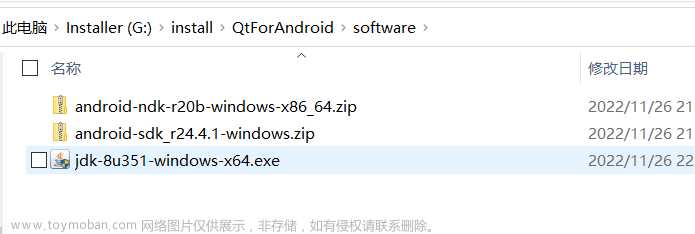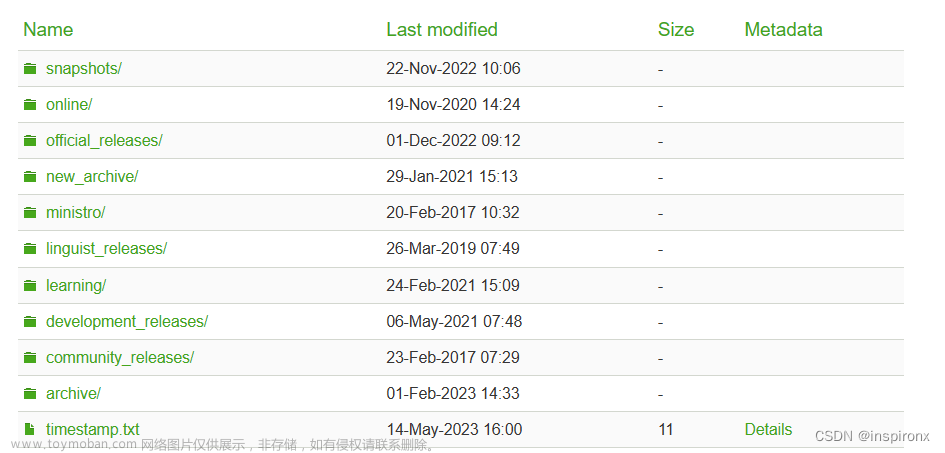1.QTEstLib框架
QTestLib框架是一个用于软件测试的开源框架,是Qt工具套件的一部分。它提供了一组用于编写自动化测试和单元测试的类和函数。
QTestLib可以方便地为Qt应用程序编写单元测试,包括测试GUI和非GUI的代码。它提供了一系列断言和辅助函数,用于验证测试的预期结果和处理测试数据。
QTestLib的特点包括:
- 支持C++和Qt框架,可以与Qt的信号和槽机制集成。
- 提供了各种断言函数,用于验证预期结果,如 QCOMPARE()、QVERIFY()等。
- 可以使用Qt的事件系统进行GUI测试。
- 支持数据驱动测试,通过参数化测试可以在不同数据集上运行相同的测试代码。
- 提供了丰富的测试结果报告和日志输出。
使用QTestLib可以帮助开发人员编写可靠的自动化测试,并提高软件质量和稳定性。
2.QT单元测试
Qt单元测试通常使用Qt Test模块来编写和执行。以下是一个简单的Qt单元测试实例,用于测试一个假设的数学函数。
-
假设的数学函数:
假设我们有一个简单的数学函数,它返回两个整数的和。
// mymathfunctions.h
#ifndef MYMATHFUNCTIONS_H
#define MYMATHFUNCTIONS_H
int add(int a, int b);
#endif // MYMATHFUNCTIONS_H
// mymathfunctions.cpp
#include "mymathfunctions.h"
int add(int a, int b) {
return a + b;
}-
编写Qt单元测试:
使用Qt Test,我们可以为这个函数编写一个单元测试。
// tst_mymathfunctions.h
#ifndef TST_MYMATHFUNCTIONS_H
#define TST_MYMATHFUNCTIONS_H
#include <QObject>
#include <QtTest>
class TestMyMathFunctions : public QObject
{
Q_OBJECT
private slots:
void testAdd();
};
#endif // TST_MYMATHFUNCTIONS_H
// tst_mymathfunctions.cpp
#include "tst_mymathfunctions.h"
#include "mymathfunctions.h"
void TestMyMathFunctions::testAdd()
{
QCOMPARE(add(2, 3), 5);
QCOMPARE(add(-2, 2), 0);
QCOMPARE(add(0, 0), 0);
}
QTEST_MAIN(TestMyMathFunctions)
#include "tst_mymathfunctions.moc"这里的关键是QCOMPARE宏,它用于比较两个值是否相等。如果不相等,测试将失败。
-
配置Qt项目文件:
确保你的.pro文件包含了Qt Test模块。
QT += testlib
QT -= gui
CONFIG += qt warn_on depend_includepath testcase
TARGET = tst_mymathfunctions
SOURCES += tst_mymathfunctions.cpp mymathfunctions.cpp
HEADERS += tst_mymathfunctions.h mymathfunctions.h-
编译和运行测试:
使用Qt Creator打开项目文件,然后构建并运行。测试结果将在“测试结果”窗口中显示。
注意:确保你的Qt环境配置正确,并且Qt Test模块可用。如果你使用的是较新的Qt版本,可能需要进行一些小的调整,但基本概念和步骤应该是相同的。
3.数据驱动测试
在Qt中,数据驱动测试(Data-Driven Testing)是一种强大的测试方法,它允许你使用多组输入数据和预期输出来参数化测试用例。这意味着你可以编写一个测试用例,并用不同的数据集多次运行它,以验证函数或方法在不同条件下的行为。
下面是一个Qt数据驱动测试的简单实例:
-
假设的函数:
假设我们有一个函数,它接受两个整数并返回它们的乘积。
// mymathfunctions.h
#ifndef MYMATHFUNCTIONS_H
#define MYMATHFUNCTIONS_H
int multiply(int a, int b);
#endif // MYMATHFUNCTIONS_H
// mymathfunctions.cpp
#include "mymathfunctions.h"
int multiply(int a, int b) {
return a * b;
}
2.数据驱动测试:
我们将编写一个数据驱动测试来验证multiply函数的行为。
// tst_mymathfunctions.h
#ifndef TST_MYMATHFUNCTIONS_H
#define TST_MYMATHFUNCTIONS_H
#include <QObject>
#include <QtTest/QtTest>
#include "mymathfunctions.h"
class TestMyMathFunctions : public QObject
{
Q_OBJECT
private slots:
void testMultiply_data();
void testMultiply();
};
#endif // TST_MYMATHFUNCTIONS_H
// tst_mymathfunctions.cpp
#include "tst_mymathfunctions.h"
void TestMyMathFunctions::testMultiply_data()
{
QTest::addColumn<int>("input1");
QTest::addColumn<int>("input2");
QTest::addColumn<int>("expected");
QTest::newRow("positive numbers") << 2 << 3 << 6;
QTest::newRow("negative numbers") << -2 << -3 << 6;
QTest::newRow("zero and number") << 0 << 4 << 0;
QTest::newRow("number and zero") << 4 << 0 << 0;
}
void TestMyMathFunctions::testMultiply()
{
QFETCH(int, input1);
QFETCH(int, input2);
QFETCH(int, expected);
int result = multiply(input1, input2);
QCOMPARE(result, expected);
}
QTEST_MAIN(TestMyMathFunctions)
#include "tst_mymathfunctions.moc"在这个例子中,testMultiply_data函数用于提供测试数据集。我们使用QTest::addColumn来定义每一列的名称和类型,然后使用QTest::newRow为每一行添加数据。这些数据集将在testMultiply函数中使用,它通过QFETCH宏来访问每一行的数据。
-
Qt项目文件:
与前面的例子类似,确保你的.pro文件包含了Qt Test模块。
QT += testlib
QT -= gui
CONFIG += qt warn_on depend_includepath testcase
TARGET = tst_mymathfunctions
SOURCES += tst_mymathfunctions.cpp mymathfunctions.cpp
HEADERS += tst_mymathfunctions.h mymathfunctions.h-
编译和运行测试:
使用Qt Creator打开项目文件,构建并运行测试。Qt Test框架将自动运行所有数据驱动的测试用例,并在“测试结果”窗口中显示结果。
通过这种方式,你可以轻松地扩展测试数据集,以覆盖更多的边界情况和正常操作,而无需为每个数据集编写单独的测试用例。
4.简单性能测试
在Qt中,性能测试通常涉及到测量某个功能或代码块的执行时间。Qt Test模块提供了QBENCHMARK宏来帮助你进行基准测试,即性能测试。以下是一个简单的Qt性能测试实例:
-
假设的功能:
假设我们有一个函数,它执行一些字符串处理操作,我们想要测量这个函数的执行时间。
// mystringprocessor.h
#ifndef MYSTRINGPROCESSOR_H
#define MYSTRINGPROCESSOR_H
QString processString(const QString &input);
#endif // MYSTRINGPROCESSOR_H
// mystringprocessor.cpp
#include "mystringprocessor.h"
QString processString(const QString &input) {
QString result;
// 假设这里有一些复杂的字符串处理操作
for (int i = 0; i < input.length(); ++i) {
result += input[i].toUpper();
}
return result;
}-
性能测试:
我们将编写一个基准测试来测量processString函数的性能。
// tst_mystringprocessor.h
#ifndef TST_MYSTRINGPROCESSOR_H
#define TST_MYSTRINGPROCESSOR_H
#include <QObject>
#include <QtTest/QtTest>
#include "mystringprocessor.h"
class TestMyStringProcessor : public QObject
{
Q_OBJECT
private slots:
void benchmarkProcessString();
};
#endif // TST_MYSTRINGPROCESSOR_H
// tst_mystringprocessor.cpp
#include "tst_mystringprocessor.h"
void TestMyStringProcessor::benchmarkProcessString()
{
QString testString = "This is a test string for benchmarking";
QBENCHMARK {
processString(testString);
}
}
QTEST_MAIN(TestMyStringProcessor)
#include "tst_mystringprocessor.moc"在这个例子中,benchmarkProcessString函数使用QBENCHMARK宏来测量processString函数的执行时间。QBENCHMARK宏会多次运行代码块以获得更准确的平均运行时间。文章来源:https://www.toymoban.com/news/detail-823469.html
-
Qt项目文件:
确保你的.pro文件包含了Qt Test模块。
QT += testlib
QT -= gui
CONFIG += qt warn_on depend_includepath testcase
TARGET = tst_mystringprocessor
SOURCES += tst_mystringprocessor.cpp mystringprocessor.cpp
HEADERS += tst_mystringprocessor.h mystringprocessor.h-
编译和运行测试:
使用Qt Creator打开项目文件,构建并运行测试。测试结果将在“测试结果”窗口中显示,包括基准测试的运行时间和迭代次数。
请注意,基准测试的结果可能受到多种因素的影响,包括CPU负载、系统资源和编译器优化。因此,在进行性能测试时,最好在相同的环境和条件下重复运行测试以获得更可靠的结果。文章来源地址https://www.toymoban.com/news/detail-823469.html
到了这里,关于QT基础篇(16)QT5单元测试框架的文章就介绍完了。如果您还想了解更多内容,请在右上角搜索TOY模板网以前的文章或继续浏览下面的相关文章,希望大家以后多多支持TOY模板网!










